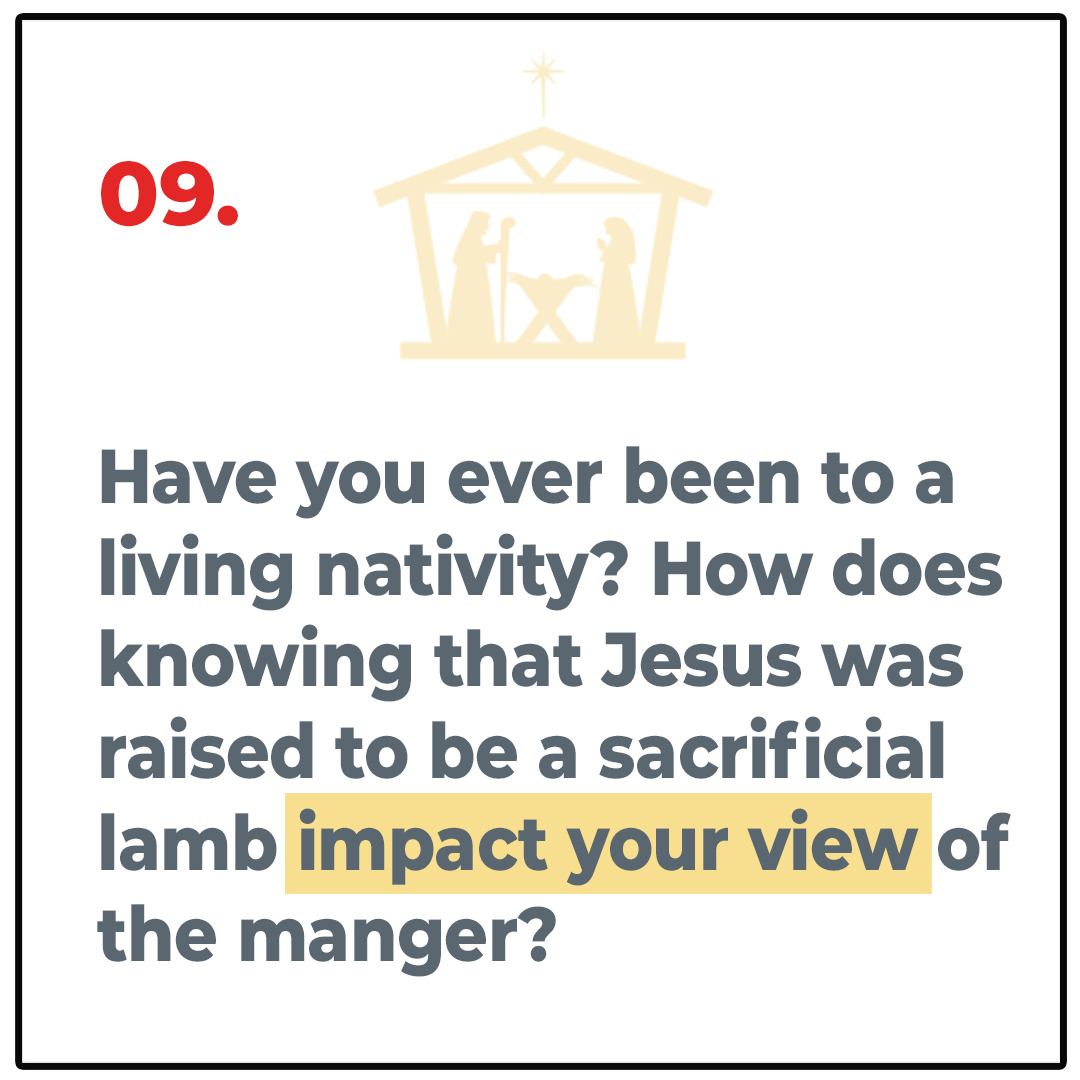
Let's Talk: Christmas Traditions
Mary’s Little Lamb
“And she brought forth her firstborn Son, and wrapped Him in swaddling cloths, and laid Him in a manger, because there was no room for them in the inn” (Luke 2:7).
“Now there were in the same country shepherds living out in the fields, keeping watch over their flock by night” (Luke 2:8).
Bethlehem is a little village five and a half miles south of Jerusalem. We might never have heard of it had not Mary’s little Lamb been born there. How fitting! For centuries the Jewish priests had been raising a special breed of lambs in Bethlehem, the best of which, the unblemished, were sacrificed during the Passover to atone for sin. Here in Luke, the perfect sacrifice, as prophesied, was born in a Bethlehem stable and laid in an animal trough. He would “atone” for all sin for all time. He would make it possible for us to be “at one” with God.
Imagine it is Passover week, some 33 years after the nativity in Bethlehem. Jesus enters Jerusalem through the Eastern Gate; the specially bred Passover lambs enter through the Sheep Gate. Jesus cleanses the temple; the Jewish people cleanse their homes of leaven (yeast), a symbol of sin. Jesus introduces the cup of “the new covenant in My blood, which is shed for you;” the Jewish people celebrate the Seder meal—retelling the story of the blood of sacrificial lambs on the doorposts. Jesus is examined before Pilate; the Passover lambs are scrutinized. Jesus walks to Calvary; the priests sharpen their knives. Jesus commits His spirit to the Father; the Passover lambs have their chins lifted to the priests.
“He was oppressed and He was afflicted, yet He opened not His mouth; He was led as a lamb to the slaughter, and as a sheep before its shearers is silent, so He opened not His mouth” (Isaiah 53:7).


